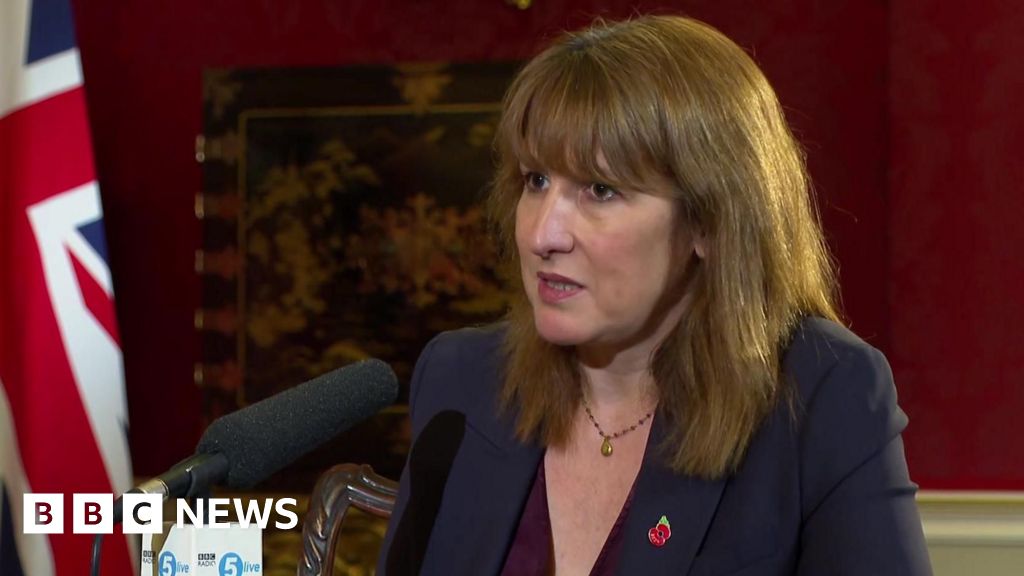Business
FBR clarifies changes in 2025 income tax return form – SUCH TV

The Federal Board of Revenue (FBR) has issued a clarification regarding changes made to the income tax return form 2025, just days before the deadline for filing returns.
The deadline for filing income tax returns remains September 30, the FBR said.
However, reports emerged that a new column had been added to the IRIS form, requiring taxpayers to disclose the market value of their assets. This development caused concern among taxpayers, especially as the filing deadline draws near.
In its clarification, the FBR stated that no new SRO has been issued in this regard. The additional column, it said, had been incorporated into the form on August 18.
The stated purpose of the new column is to determine the market value of assets, enabling the collection of authentic data for better policymaking.
The FBR stressed that the requirement to declare the market value of assets has no bearing on tax liability and would not be used to initiate proceedings against any taxpayer.
It stated that the inclusion of the market value of assets on page 66 of the return form had already been mandatory. However, many taxpayers were entering zero in the relevant field, which has now been restricted.
It clarified that declaring the market value of property remains entirely at the discretion of the taxpayer. It added that the purpose of the required details was neither tax calculations nor any notice would be issued for errors in this information.
The revenue authority stated that wealthy individuals were already submitting information regarding their assets under Section 7E, while other taxpayers are only expected to declare values close to actual market prices.
It emphasised that asset values declared will neither be used for tax calculation nor considered in the reconciliation of the wealth statement. Taxpayers who have already filed returns will not be asked to re-file.
Business
Rachel Reeves suggests family benefit limits will be lifted

Paul SeddonPolitical reporter
Rachel Reeves has suggested she favours removing limits on benefits linked to family size at this month’s Budget.
The chancellor told the BBC it was not right that children in bigger families were “penalised” through “no fault of their own”.
The comments are a sign she could remove the two-child limit on working-age benefits introduced under the Conservatives in 2017.
Some Labour MPs have been calling for a full reversal of the policy, amid reports she was considering paring back payments after two children instead.
In September, the Guardian reported that Treasury officials were considering a tapered approach, under which parents would receive most benefits for their first child and less for subsequent children.
Other options under consideration included limiting additional benefits to three or four children, the newspaper reported.
But speaking to Matt Chorley on BBC Radio 5 Live, Reeves suggested she did not want to see benefits limited according to family size.
“I don’t think that it’s right that a child is penalised because they are in a bigger family, through no fault of their own,” she added.
“And so we will take action on child poverty. The last Labour government proudly reduced child poverty, and we will reduce child poverty as well.”
She added there were “plenty of reasons why” parents who decided to have three or four children could see their financial circumstances change.
Manifesto pledges
Elsewhere in her interview, she all but confirmed the government plans to break Labour’s manifesto pledge at last year’s general election not to raise income tax rates, VAT or National Insurance.
“It would of course be possible to stick with the manifesto commitments. But that would require things like deep cuts in capital spending,” she added.
“What I can promise now is I will always do what I think is right for our country. Not the politically easy choice, but the things that I think are necessary to put our country on the right path,” she added.
Labour’s 2024 election manifesto pledged not to raise the basic, higher, or additional rates of income tax, or National Insurance – prompting a row last autumn when Reeves announced a hike in the contributions paid by employers.
It also promised not to raise Value Added Tax (VAT), a sales tax, although the manifesto did not specify whether this applied to the rates, or which products are subject to the charge.
The chancellor has not ruled out continuing to freeze income tax thresholds beyond the 2028 date fixed by the last government, allowing more people to be dragged into higher bands as their wages rise over time.
Pressed on whether she could have avoided tax hikes through lower public spending, she said she was “not going to apologise” for increased funding for the NHS, adding that reducing waiting lists was one of her three Budget priorities.
She also claimed that some of the spending she unveiled at June’s spending review had been pencilled in, but not properly funded, by the Tories.
‘Same choices’
The two-child cap prevents households on universal or child tax credit from receiving payments for a third or subsequent child born after April 2017.
This is different to child benefit, which is paid to families where the highest-earning parent earns less than £80,000.
Separately, there is also an overall cap on the amount of benefits working-age families can claim, which has been in place since 2013.
The Institute for Fiscal Studies think tank estimates fully reversing the two-child benefit cap could take 630,000 children out of absolute poverty, defined as households with an income below 60% median average, at a cost of £3.6bn a year.
Pressure to ditch the limit increased during the recent Labour deputy leadership contest, where successful candidate Lucy Powell and runner-up Bridget Phillipson both indicated they favoured more action on child poverty.
Reform UK is pledging to scrap the limit for working British couples if it wins power, although the Conservatives say the cap should remain in place, forcing a symbolic vote on the issue in the House of Commons in September.
Speaking after the vote, Tory leader said her party believes “those on welfare should have to make the same choices as those who aren’t,” and Labour and Reform were expecting working people to pay for “unlimited handouts”.

Business
US stocks today: Markets rise on hopes of US govt shutdown ending; Nasdaq jumps over 440 points, S&P 500 gains 1% – The Times of India

Global stock markets rose sharply on Monday as investors showed optimism amid reports that the US government shutdown could soon be resolved, after a breakthrough in the record 40-day standoff.Dow was trading up 115 points or 0.25%, reaching 47,103. Nasdaq also inched 1.95% or 448 points, to trade at 23,452 at 8:50 PM IST. S&P 500 also jumped 1% to 6,804. A group of Senate Democrats joined Republicans in a procedural vote on Sunday evening, clearing the path for a formal debate after a bipartisan deal was reached to fund government operations through January. “The more risk-on mood means it’s pretty much a sea of green on the boards,” Neil Wilson, UK Investor Strategist at Saxo told AFP. The reopening could bring much-needed clarity on US inflation and the soft labour market, both critical to the Federal Reserve’s plans for potential interest rate cuts next month. “If all goes well, some federal agencies could reopen as soon as Friday,” said David Morrison, senior analyst at Trade Nation. He noted that both investors and the Fed have been “flying blind since the beginning of October, with a near-complete absence of data.” Morrison added, “Fed Chair Jerome Powell has played down the prospect of another rate cut in December, as it is far from obvious that inflation has peaked.” Investor focus on Monday was dominated by the prospect of a government reopening, as concerns mounted over the impact on low-income households reliant on food benefits and potential disruptions to air travel ahead of Thanksgiving. “Shutdowns haven’t typically had a big bearing on the economy or on financial markets. But, this one… looked as though it might start to cause some trouble,” said analysts at Capital Economics. Optimism was further boosted by Pfizer’s reported $10 billion victory in the bidding war for biotech obesity specialist Metsera over the weekend. Wall Street opened higher following a week of losses sparked by worries that the AI investment boom had inflated tech valuations to unsustainable levels. European markets also climbed, mirroring gains in Asia. Tensions between the US and China eased further after Beijing announced a one-year suspension of “special port fees” on US vessels, coinciding with Washington’s pause on levies targeting Chinese ships. In currency and commodity markets, the dollar steadied against the euro and pound while rising against the yen. Oil prices gained slightly after last week’s decline amid concerns over supply and global demand uncertainties.
Business
Are You Applying To A Job That Doesn’t Even Exist? 1 In 4 Listings Could Be Fake In 2025

New Delhi: India’s job market is facing a growing credibility crisis with a sharp rise in ghost job postings — fake or inactive listings shared by companies with no real intent to hire. A recent report by The Economic Times (ET) reveals that such misleading advertisements have increased by nearly 25 percent year-on-year, frustrating millions of job seekers.
These postings are commonly found on LinkedIn, Naukri, Indeed, and even official company portals. While they appear to signal active hiring, many exist purely for employer branding, resume collection, or market analysis. Firms often use ghost listings to gauge salary trends, talent availability, or simply to project an image of business expansion despite frozen hiring budgets.
Responding to concerns over fake listings, LinkedIn said it remains committed to protecting users from fraudulent job activity.
“We’re focused on helping recruiters find quality candidates quickly and jobseekers find their next role on LinkedIn. We use advanced technology and expert teams to proactively remove more than 99 percent of fake accounts and scams before they’re ever reported. Our policies are clear that every job a recruiter posts on LinkedIn should be authentic and accurately represented, and all listings on LinkedIn are automatically closed after 6 months,” the company said in a statement.
Despite such safeguards, ET’s report suggests that one in five online job ads could still be inactive or misleading, particularly in IT, retail, construction, and manufacturing sectors. Only about 20 percent of these listings ever result in an actual interview or offer.
Experts advise candidates to verify listings on official company websites, check posting dates, and connect with employees or HR representatives before applying. Ghost job postings, though convenient for short-term corporate branding, erode long-term trust. Strengthening transparency and authenticity in hiring will be crucial to restoring faith in India’s digital job market.
-

 Politics1 week ago
Politics1 week agoPolitical violence kills almost 300 since Hasina’s fall: rights group
-

 Sports1 week ago
Sports1 week agoPakistani runners make their mark at Istanbul Marathon
-

 Entertainment1 week ago
Entertainment1 week agoPresident Zardari to attend Second World Summit for Social Development in Doha
-

 Politics1 week ago
Politics1 week agoIran vows to rebuild nuclear sites ‘stronger than before’
-

 Tech1 week ago
Tech1 week agoLive TV Isn’t Dead. These Are the Best Live TV Streaming Services
-

 Politics1 week ago
Politics1 week agoTwo arrested after multiple people stabbed on UK train, police say
-

 Entertainment1 week ago
Entertainment1 week agoGeorge Clooney on “Jay Kelly,” fame and family
-

 Sports1 week ago
Sports1 week agoDyche fumes at Man Utd goal, calls for VAR change












